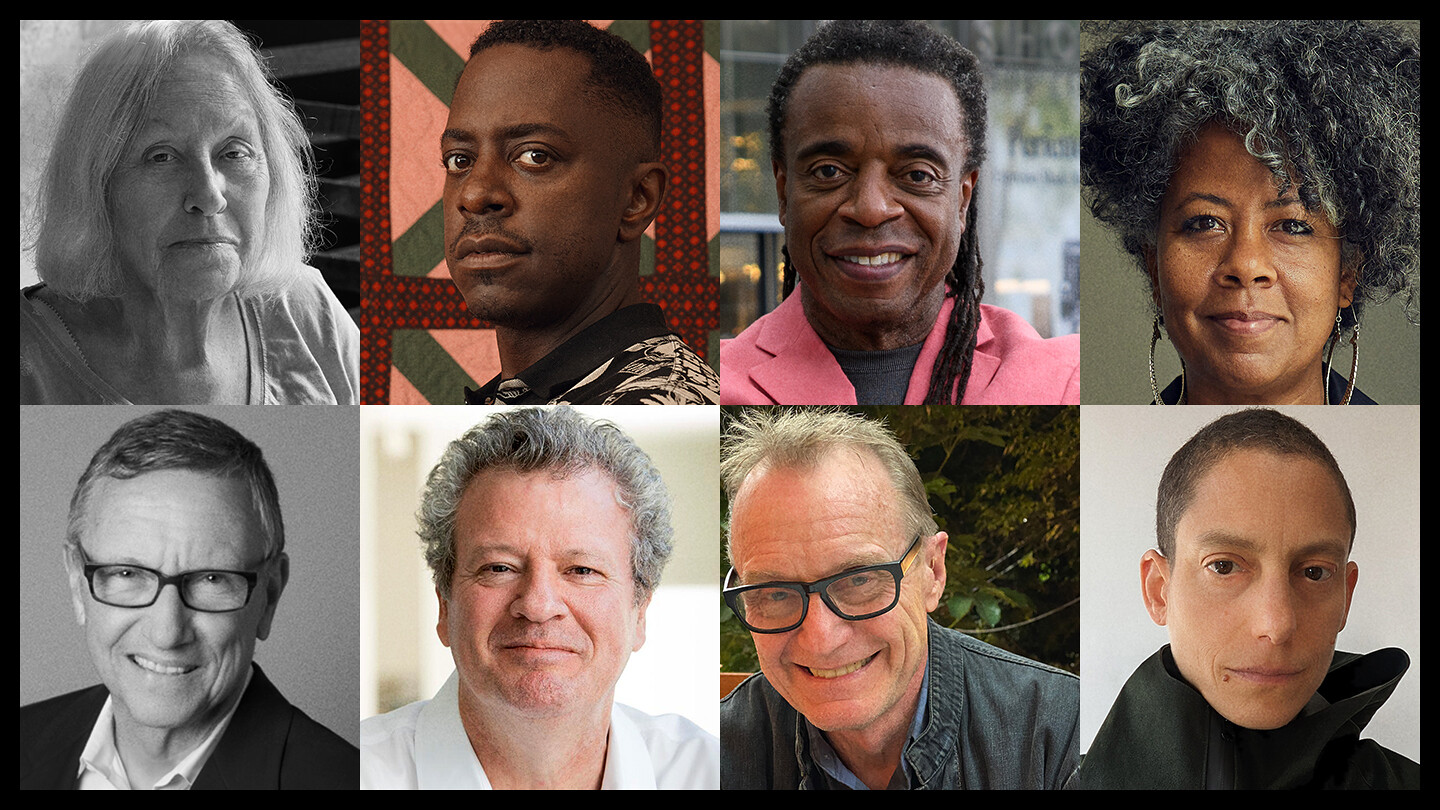The National Academy of Design is delighted to announce the election of eight artists and architects as National Academicians. Elected by the current National Academy membership in recognition of their contributions to contemporary American art and architecture, the class of 2023 Academicians includes:
Alice Adams (Visual arts)
Sanford Biggers (Visual arts)
Willie Cole (Visual arts)
Torkwase Dyson (Visual arts)
Richard Gluckman (Architecture)
Carlos Jiménez (Architecture)
Mel Kendrick (Visual arts)
Sarah Oppenheimer (Visual arts)
The National Academy is the leading honorary society for artists and architects in the United States. New members are exploring the frontiers of art and architecture, which include forays into experimental uses of traditional mediums and conceptual approaches that question the boundaries of architecture and art as discrete and preconceived disciplines.
The induction of new members follows the opening of the National Academy of Design’s new home in the Chelsea arts district in New York City at 519 West 26th Street. The new space will function as a place of experimentation for the National Academy, a space for inclusive and accessible programming that will showcase Academicians alongside other artists and architects who are working within the current cultural landscape.
The annual nomination and election of National Academicians dates to the National Academy’s founding as America’s first artist-led arts organization in 1825. New Academicians are nominated and elected by the current members of the National Academy, a community of 431 artists and architects across the country; more than 2,400 artists and architects have been elected since 1825.
“We are thrilled to welcome this remarkable class of newly elected Academicians, the first since the National Academy of Design opened its new home in Chelsea,” noted Gregory Wessner, Executive Director, National Academy of Design. “As the Academy begins an exciting chapter, this election of eight artists and architects–whose work spans mediums and demonstrates breathtaking ambition–reaffirms the Academy’s commitment to recognizing daring work and ideas in contemporary art and architecture.”
Upon election, Academicians have the option to join more than 2,000 of their predecessors and donate a representative example of their work – called the Diploma Work – to the National Academy’s collection. With more than 8,000 paintings, sculptures, works on paper, architectural drawings and models, and more, the National Academy’s collection has been assembled almost entirely through the donations of its artists and architect members.
Induction event
An Induction Ceremony celebrating the Class of 2023 National Academicians will take place on Tuesday, October 24 from 6–9pm in New York City. The Induction Ceremony is by invitation only; a video program documenting the practices of the eight new Academicians will be live-streamed to the public during that event. More details about how to watch the livestream will follow.
Induction exhibition
A special exhibition featuring recent work of the 2023 National Academicians is anticipated to open in early February 2024 in the galleries of the National Academy of Design, 519 West 26th Street, 2nd floor. Details will be announced in the coming months.
Intoducing the 2023 National Academicians
Alice Adams (b. 1930, she/her, Jamaica, NY) is a visual artist recognized for her abstract realism.
Adams is best known for her sculpture and site-specific land art, as well as public art projects in transit systems, airports, and universities. Her early fiber work, tapestries, and weavings are prominent and influential among artists in the United States. Adams experimented with architectural forms: the wall, the corner, the column, and the vault, often using flexible materials, such as latex and fibers, tarred ropes, and chain link fencing.
Sanford Biggers (b. 1970, he/him, Los Angeles, CA) is an interdisciplinary artist.
Biggers creates hybridized monumental works from stone and bronze to textiles and paint. Straddling Visual arts and music, he fronts a multimedia concept band: Moon Medicin. His diverse practice positions him as a collaborator with the past through explorations of often-overlooked cultural and political narratives from American history. His work is an interplay of narrative, perspective, and history that speaks to current social, political, and economic happenings while examining the contexts that bore them.
Willie Cole (b. 1955, he/him, Somerville, NJ) is a conceptual artist.
Cole transforms objects, from steam irons to high-heeled shoes, into sculptures, installations, and works on paper. Mining his heritage and confronting the legacies of slavery in the United States, Cole creates work that uncovers ways objects store memories.
Torkwase Dyson (b. 1974, she/her, Chicago) is a painter working across mediums.
Dyson’s abstract works explore the continuity between ecology, infrastructure, and architecture. Examining human geography and the history of Black spatial liberation strategies, Dyson grapples with the ways in which space is perceived, imagined, and negotiated particularly by Black and Brown bodies.
Richard Gluckman (b. 1947, he/him, Buffalo, NY) practices architecture.
Gluckman’s design approach is defined by an emphasis on architecture as an experiential opportunity; a frame for art and human activity. Since establishing his practice, now named Gluckman Tang, in New York City, Gluckman has created distinctive spaces and buildings for artists, public arts institutions, art foundations, galleries, and art collectors.
Carlos Jiménez (b. 1959, he/him, San Jose, Costa Rica) practices architecture.
Jiménez founded Carlos Jiménez Studio forty years ago in Houston, Texas. The studio, located in interconnected buildings surrounded by trees, maintains focus by accepting one project at a time. His portfolio includes single-family homes, cultural institutions, and bank branches.
Mel Kendrick (b. 1949, he/him, Boston, MA) is a conceptual artist.
Kendrick’s practice involves the use of cast bronze, concrete, and a variety of woods, rubber, resin, and cast paper. His sculptures provoke viewers to grapple with the object both as they experience it and as they think about it, and how it was made.
Sarah Oppenheimer (b. 1972, it/its, Austin, TX) is an architectural manipulator.
Oppenheimer creates circulatory pathways that establish unexpected kinesthetic and visual relays between bodies and buildings. Rhythms and timescales of living systems flow from body to building and back again. The viewer is transformed into an agent of spatial change.

